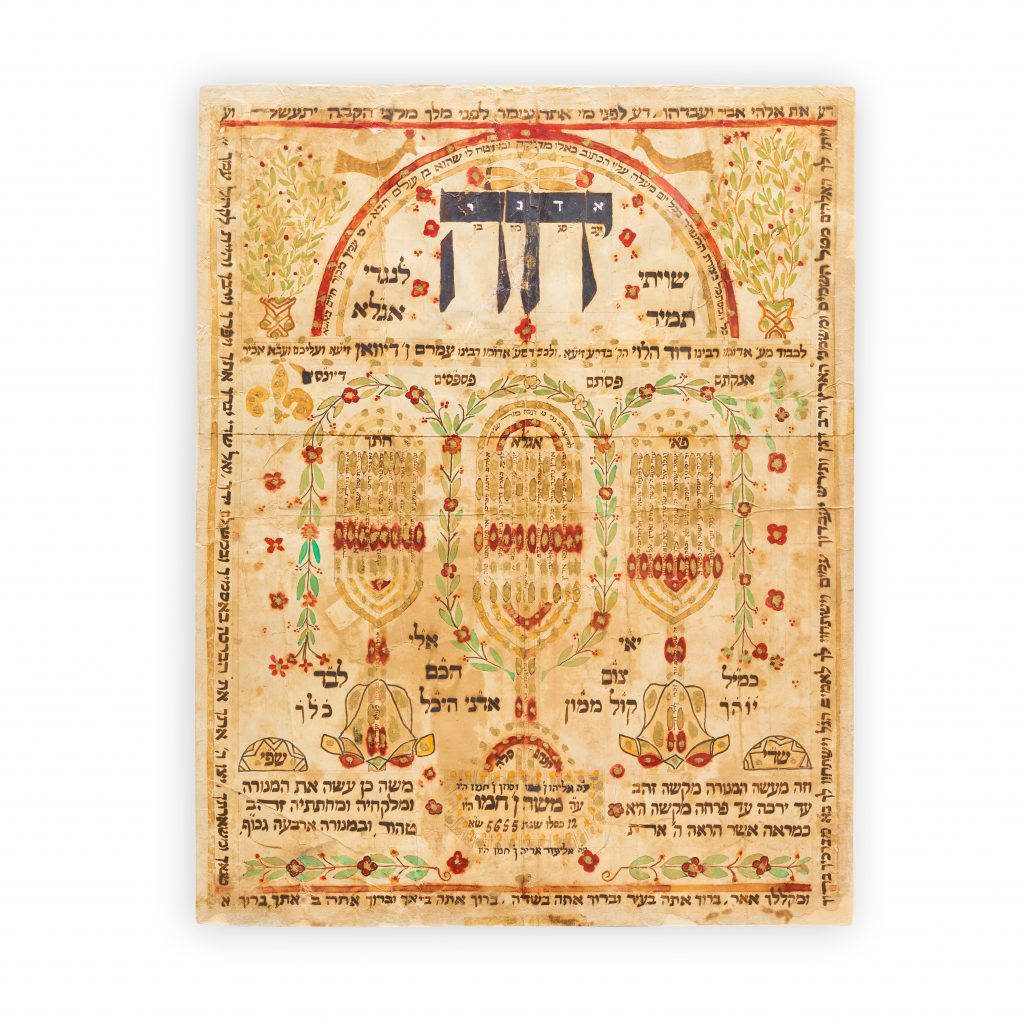Shivitti
Morocco, 1894
Ink, gouache, and shell gold on paper
Courtesy of the Leonid and Tatiana Nevzlin Collection
Must Know
A Shiviti is a meditative representation of the Temple Menorah used for contemplation over God’s name. “Shiviti” is the first word in the hebrew text of Psalms 16:8 meaning “I have placed” and the next word is the Four Letter Name of G-d, which is writ large. The complete verse means “I have placed the Lord always before me”, and is written at the top. This item is meant to enable the worshipper, while praying, to assume an appropriate posture and frame of mind. Usually hung on the Eastern wall or in front of the cantor’s lectern, shiviti plaques often included the image of a stylized menorah.
More Info
This example depicts three menorahs, the central one inscribed with the verses from Psalm 67, the left menorah encompasses the text of the Ana Bekoach, a liturgical hymn whose initial letters form the 42 letter name of God and the right menorah features the biblical verses of Psalm 121. The custom of gazing upon Psalm 67 in the form of the menorah was encouraged by great mystics such as Rabbi David Abudraham as far back as 14th century Spain. Further, Rabbi Luria, (the Ari z”l), introduced the recitation of Psalm 67 at certain times during the Morning Prayer service. The Kabbalists observed that Psalm 67 has a sentence structure such that it may be said to figuratively represent the Temple Menorah. This plaque, created by Moses Ibn Hamo, is dedicated to two venerated Moroccan Jewish leaders, Rabbi David Halevy, from the Dra’a region (60 miles northeast of Marrakech) and Rabbi Amram Ibn Diwan, an 18th-century rabbi whose tomb in Ouazzane, Morocco is the site of an annual pilgrimage.

